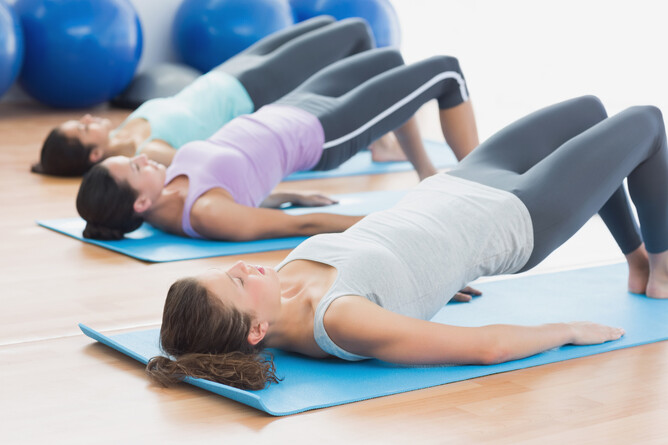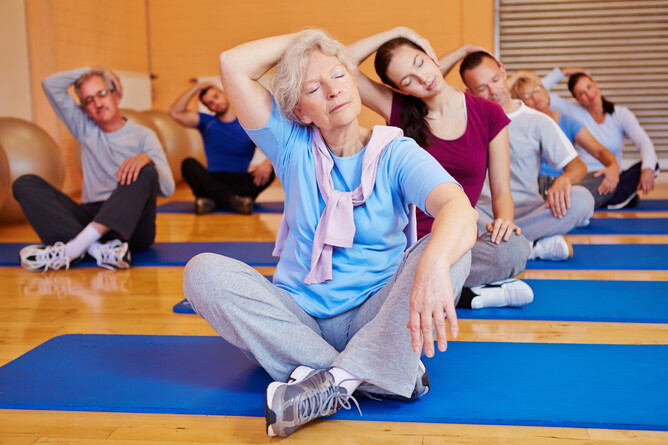Pilates' got your back!
Whose got your back?
We’ve got your back!
Pilates is well known for helping people cope with and recover from lots of back problems. From low back pain to sciatica, and many more painful and debilitating back conditions, Pilates can be a positive part of your recovery.
Do you know that Joe Pilates said,
“If your spine is stiff at 30, you are old.
If your spine is flexible at 60, you are young.”
How do we achieve these young spines?
In Pilates we talk about and use 5 spine shapes. These 5 spine shapes need to be moved through daily and when we exercise, for the flexibility, strength, and overall health of the spine. Moving through the 5 shapes will keep our spines young.
The 5 spine shapes are,
· Tall back
· Round back
· Arched back
· Twist
· Side flexion
Can you find your longest curves?
All the spine shapes in Pilates are the longest version of each shape that you can make, even the curved shapes need to have the longest curves possible. Think of the long balanced curve of a rugby ball, rather than curve of a beach ball.
We are wanting to lengthen the spine and create strength to support the length. We are actively working to decompress rather than compress the spine.
Also, the distribution of the curve in flexion or extension needs to be equal so that for example there is not an excess of movement in the shoulder area compared to the lower back.
What is Tall back?
Tall back is an upright, aligned spin maintained while holding your natural spinal curves in correct posture.
Sounds easy?
So, what makes it a challenge to achieve Long back or Tall back and make it our basic, healthy back position in sitting and walking, and dealing with the world?
The challenge is that sedentary jobs, computer, and phone screen use create a habitual collapsed posture with too much flexion. Our heads, necks and shoulders are rounded forward, and we start to become fixed in that position. Our muscles tighten and fix into this unhealthy shape, and we lose the strength and muscle memory to lift the thoracic spine out of flexion and open the chest. Our breathing and our sense of self are compromised. We are facing the world from a collapsed stance.
What is Round back?
Round back is a healthy balanced flexion of the spine. The longest curve of the entire spine including the head and neck.
It’s the position we need for cradling a baby, carrying heavy objects close to the body, running, pushing a lawn mower, cycling, preparing food on a work surface.
The challenge with Round back is partly perception and partly habitual patterns. We are in a rounded slumped position most of the time at this point in history. From about the age of 12 we become screen obsessed and lose our natural healthy ability to round the spine without compression. This postural problem is caused structurally by a lack of core strength and extensor strength.
Without core strength we collapse into our hips and collapse our chests and compress our spines. The perception issue is that we don’t feel, we don’t perceive, that we are losing strength and flexibility. The slumped position feels comfortable until we have damaged our necks and backs, little by little, day by day. In Pilates we are trying to lengthen as we curve, not slump and shorten.
What is Arched back ?
Arched back is the opposite to round back. Ideally, it’s a balanced arch or back bend type movement, extending the spine away from flexion. The equal and opposite curve to Round back. Round back is a long concave shape and Arched back a long convex shape of the spine.
Arched back is one of the spinal movements we have most problems with because our modern lives don’t favour extension or backbending and so we lose the muscle strength and length to achieve this beautiful, functional movement. We need this movement to look at the stars, look up into a tree and pick the fruit, to lift our faces to the sun, watch a bird fly, hold our child up in our outstretched arms.
What is a Twist ? Or what is spinal rotation ?
Tall back is central to this spinal movement of rotation or twisting. Without a tall, decompressed spine our ability to rotate or twist the spine is reduced. Another problem for rotation, is the tight, tense necks and shoulders we suffer from, which prevent freedom of movement of the torso, neck and head turning left to right. away from the base of the pelvis.
Twisting is a very important functional movement. We need to turn our heads and shoulders to see what’s coming, to reverse our cars, to look at others in groups and around the table as we talk and interact. We need this movement to move objects from one side to the other, from behind to in front, from in front to the side, to put on a coat and do the twist ! Freedom in this plane of movement also helps our breathing and digestion as well as our dancing, embracing and driving.
What is Side flexion ?
Side flexion is side bending. Our favoured slumped position forward, over our devices, on our sofas, shortens our “side body” and compromises the muscles that help us to stay upright. We need to lengthen and strengthen our side-supporting muscles and the muscles that stabilise the torso.
Our Right or Left handedness also causes us to slump down on one side a little more than the other and rotate unevenly. The R or L dominance adds to the problems of posture as we continue our seated, tech driven lives. Side flexion helps us to rebalance our bodies, reach for something on a high shelf, pick up shells on the beach, swing our children or a golf club.
Put it all together, what do you get ?
You get a Pilates class that will move your spine through all 5 spine shapes!
Today more than ever we need to look after our spines, keep them flexible and strong thereby staying young through our spine health. As Joe Pilates said,
“A few well-designed movements, properly performed in a balanced sequence are worth hours of sloppy calisthenics or forced contortions.”
So come and try a well-designed sequence of Pilates mat, Pilates reformer and Pilates studio equipment exercises at Turning Tide Pilates to keep you and your spine young, flexible, healthy and strong.



